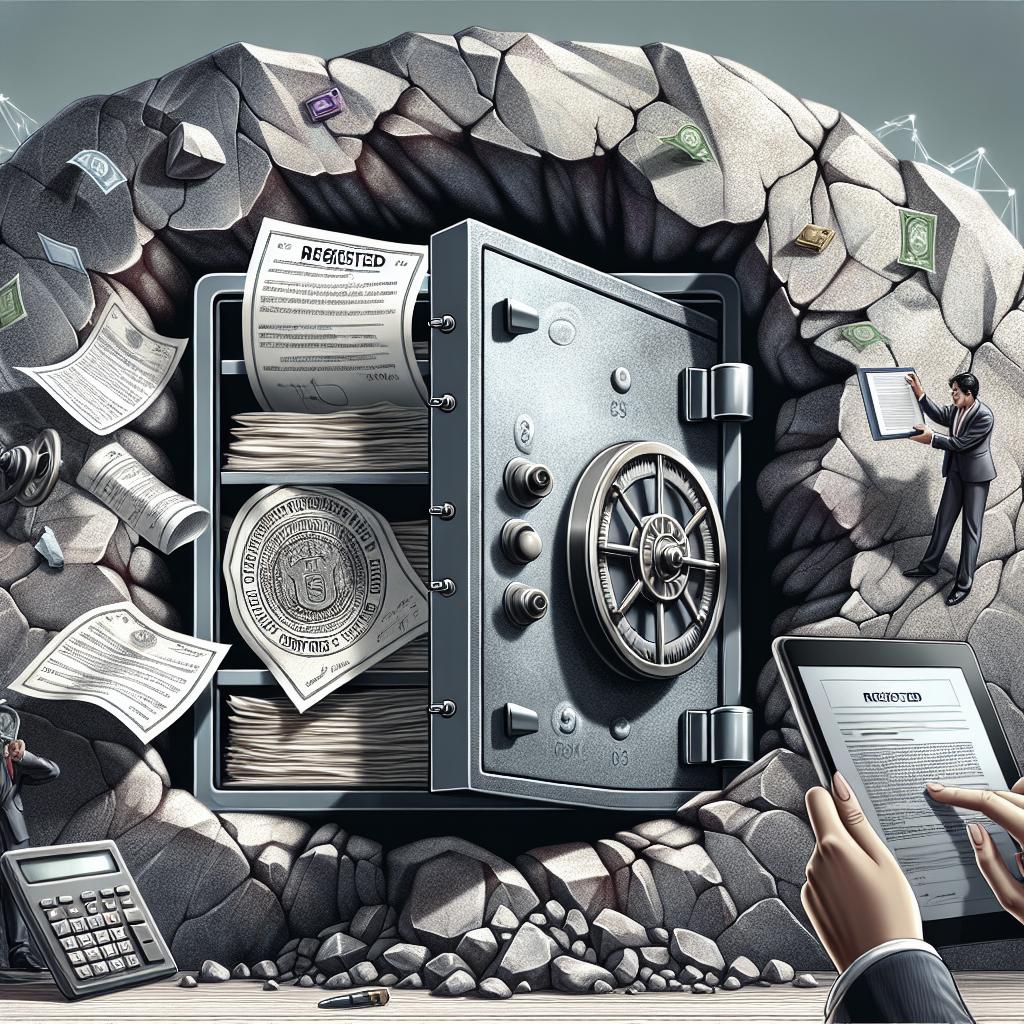<>
“`
Maintaining an accurate record of the condition and status of registered assets is essential for any business aiming to optimize operational efficiency and financial accuracy. This blog post provides a comprehensive guide on understanding fixed assets, preparing a fixed asset register, choosing which assets to record, maintaining the register, and ensuring precision through regular audits and updates. Additionally, it will cover practical steps like adding QR code asset tags and using advanced tools like itemit’s Fixed Asset Register. Whether you are a small business owner or managing large-scale assets, this guide will assist you in systematically managing your fixed asset inventory.
Understanding What Fixed Assets Are
Fixed assets, also known as tangible assets or property, plant, and equipment (PPE), are long-term resources owned by a company that are used in its operations to generate income. These assets have a useful lifespan extending beyond a year and are not intended for immediate sale. Understanding the nature of fixed assets is crucial for proper recording and management. Investment in fixed assets represents a significant proportion of an organization’s capital. These assets demand regular maintenance, audits, and updates to ensure they deliver long-term value and efficiency.
Types of Fixed Assets
Fixed assets include a wide variety of items such as machinery, buildings, computer equipment, vehicles, and office furniture. Each category has distinct attributes that need particular attention while recording and maintaining. For instance, machinery requires regular inspections and maintenance schedules, whereas vehicles need tracking for mileage and servicing records. Clearly distinguishing between various types of fixed assets ensures more effective management and accurate records.
Preparing a Fixed Asset Register
A fixed asset register is a detailed record of all fixed assets owned by a business. This register helps in tracking the condition, location, value, and other critical attributes of assets. Here’s a step-by-step approach to preparing a comprehensive fixed asset register.
Step 1: Gather Necessary Information
Before you create an asset register, collect all the necessary information about each fixed asset. This includes purchase dates, purchase prices, warranties, current condition, maintenance schedules, and any other details relevant to the management of these assets. Ensuring that you start with complete and accurate information lays the foundation for an effective and reliable asset register.
Step 2: Choose the Right Tool
Select software or tools that fit your business needs for creating and maintaining the asset register. While smaller businesses might manage with spreadsheets, larger businesses should invest in specialized fixed asset management software to handle more complex requirements. Look for tools that offer features like easy data entry, real-time updates, customizable fields, and integration with other financial systems.
Step 3: Categorise Your Assets
Organise your assets into logical categories based on their type and usage. Common categories include IT equipment, vehicles, office furniture, and machinery. Categorisation helps in improved analysis and management of assets. Using standardized categories also assists in generating reports, making it easier to track and maintain the assets over time.
Step 4: Create Unique Identifiers
Assign a unique identifier or code (such as a barcode or QR code) to each asset. These identifiers simplify the process of tracking and managing assets and prevent duplication in the record-keeping. Physical tags attached to assets can be scanned during audits or inspections, making the process of updating the register more efficient and accurate.
Step 5: Record Detailed Information
Enter all gathered information into the register systematically. Include details like asset name, category, location, purchase date, purchase cost, depreciation method, and any other relevant data. Ensure that the data entered is consistent and up-to-date. Missing or inaccurate information can undermine the efficacy of the register.
Step 6: Update Regularly
Regularly update the fixed asset register to reflect changes resulting from acquisitions, disposals, depreciation, or transfer of assets. This consistent updating keeps the register accurate and reliable for financial reporting and operational planning. Periodic reviews of the asset register, ideally quarterly or bi-annually, help in maintaining its accuracy and relevancy.
Choosing Which Assets to Record
Not all assets may need to be included in the fixed asset register. Businesses should focus on assets that significantly contribute to operations and have a considerable purchase value. Smaller items, usually referred to as consumables or minor assets, may not require detailed tracking and can often be managed through general inventory systems.
How to Record Your Fixed Assets
Recording fixed assets involves documenting their critical attributes in the register. The information must be precise, consisting of qualitative and quantitative details about the asset on a per-unit basis. Each entry should be methodically checked for correctness before being added to the register, ensuring a high level of data integrity.
Maintaining Your Fixed Asset Register
Maintaining the register involves regular audits, updates, and consistent reviews. This process ensures that information remains current, helping businesses execute timely maintenance, forecast asset needs, and plan replacements. Effective maintenance of the register supports compliance with statutory requirements and enhances operational efficiency.
Adding a QR Code Asset Tag
QR code tags can be linked to each asset’s record in the register, enabling quick access to asset information via mobile devices. These tags simplify the process of updating and auditing asset details. Implementation of QR codes facilitates more effective tracking and assists in maintaining high data accuracy.
Use itemit’s Fixed Asset Register
itemit’s Fixed Asset Register offers a comprehensive solution for tracking and managing your fixed assets. The platform provides features like bulk data import, real-time updates, and detailed reporting. itemit helps businesses simplify asset management processes, ensuring that all assets are efficiently recorded, tracked, and maintained.
Frequently Asked Questions
What is the frequency of updating a fixed asset register?
It is recommended to update the fixed asset register quarterly or bi-annually to ensure that all changes in the asset base are accurately captured. Businesses with rapidly fluctuating assets might require more frequent updates.
What expenses come with installing asset-tracking technologies?
Costs associated with installing asset-tracking technologies may include the price of software licenses, hardware like QR code printers and scanners, and any ongoing subscription or maintenance fees.
What is the process for businesses to manage asset depreciation in the ledger?
Businesses manage asset depreciation by adopting systematic methods like straight-line or reducing balance depreciation. Details of accumulated depreciation should be updated in the asset register periodically to reflect accurate book values.
What are the typical obstacles encountered when managing a fixed asset register?
Common obstacles include data inaccuracies, inconsistent updates, difficulty in asset categorization, and lack of standardized processes. Overcoming these challenges is essential for an effective fixed asset management system.
Are there particular best practices for keeping a fixed asset register in specific industries?
Yes, best practices vary by industry. For example, in manufacturing, adhering to stringent maintenance schedules is critical, whereas in IT, focus might be on software asset management and tracking usage licenses.
What frequency is recommended for updating a fixed asset register to guarantee precision?
A quarterly update is generally recommended to ensure that precision is maintained. Businesses experiencing rapid asset changes might favor more frequent, even monthly updates.
What are the steps to audit a fixed asset register effectively?
Effective auditing involves physical verification of assets, cross-referencing with records, updating discrepancies, and re-evaluating asset conditions. Regular audits help maintain the accuracy and reliability of the register.
How to Prepare a Fixed Asset Register
Fixed asset registers are essential for tracking and maintaining an organization’s resources. They provide comprehensive data necessary for financial reporting and operational planning.
Choose a better way to track your assets
Adopting advanced asset management solutions like itemit can streamline your fixed asset management processes. These solutions offer real-time tracking, ease of use, and compatibility with other business tools.
| Topic | Main Points |
|---|---|
| Understanding What Fixed Assets Are | Definition, importance, and examples |
| Preparing a Fixed Asset Register | Steps: Information Gathering, Tool Selection, Categorization, Unique Identifiers, Data Entry, Regular Updates |
| Choosing Which Assets to Record | Selecting significant assets, excluding minor ones |
| Recording Fixed Assets | Documenting asset information accurately and methodically |
| Maintaining the Fixed Asset Register | Regular audits, updates, and reviews |
| Adding a QR Code Asset Tag | Implementation and benefits of QR codes for asset tracking |
| Use itemit’s Fixed Asset Register | Advantages and features of using itemit for asset management |
| Frequently Asked Questions | Update frequency, costs, depreciation management, common issues, industry-specific practices, audit steps |
“`


